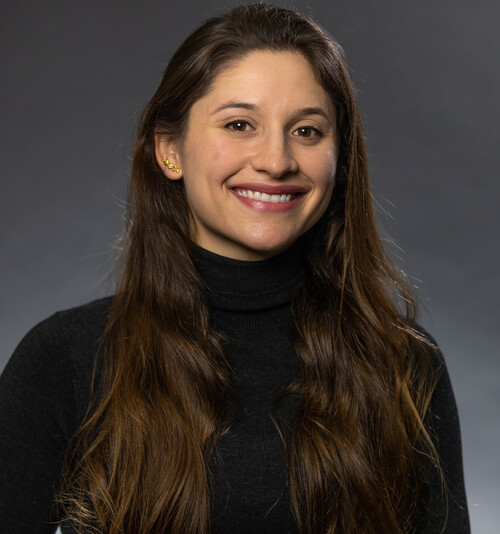Juliana García-Mejía

At night, the sky above the Colombian coffee farm where Harvard Griffin GSAS student Juliana Garcia-Mejia grew up teemed with stars. On many evenings her uncle, an anthropologist with a love of astronomy, would gather all the cousins together to gaze up and think about the universe.
“He started asking us questions such as ‘Do you think that the existence of the moon is important for life on earth?’” Garcia-Mejia remembers. “I was absolutely enthralled. I really could not get enough of those conversations with my uncle. It became this kind of love for science that we shared.”
As a 2022 Harvard Horizons Scholar, Garcia-Mejia is still enthralled with the night sky—so much so that she has designed, built, installed, and is now testing a new instrument to search the heavens. This work is the topic of her Horizons project, “The Tierras Observatory: An Ultra-Precise Photometer to Characterize Nearby Terrestrial Planets.” Her ultimate goal is to identify worlds that might support life.
The project is in part inspired by NASA’s Transiting Exoplanet Survey Satellite (TESS) launched in 2018. At its apogee, the satellite’s elliptical orbit takes it about as far from Earth as the distance to the moon. There, the space-based observatory trains its camera on a part of the sky, taking pictures rapidly and continuously. In two to four years, TESS is expected to capture images of around 200,000 stars—and some of the planets that revolve around them.
TESS is very powerful but it’s still only one satellite. To do a nearly all-sky survey within four years, it can focus on each sector for only 27 days. Garcia-Mejia says that’s not enough time to capture planets that are distant from the star they orbit—and thus, more likely to support life.
“TESS uses the transit method of detecting planets,” she explains. “A planet orbits a star. When it comes between the star and the observer—in this case, TESS—the amount of light we measure from the star diminishes. That’s how we detect planets. But planets that are colder and more temperate are more distant from the star. Like the Earth, they have orbits longer than 28 days, so TESS could miss a lot.”
To fill this gap, Garcia-Mejia founded the Tierras Observatory at the top of Mount Hopkins in Arizona. Using cameras twice as sensitive as those in most “state of the art” ground observatories combined with other innovations—a custom filter that minimizes the negative effects of the atmosphere on astronomical observations; four lenses that expand the observatory's field of vision—Tierras will look more closely at the systems identified by TESS in search for the smallest and most temperate planets, as well as for hints of any moons.
“I am most interested in building astronomical instruments that enable research on the question of whether we are alone in the universe,” Garcia-Mejia says. “The first step in that quest is to find places where there could potentially be life as we know it on Earth. That means looking for planets that are very similar to the Earth. Those tend to be the smallest planets, so you need the most precise and powerful instruments to be able to identify and characterize them.”
Garcia-Mejia hopes that her research advances the search for life in the universe. But she has another aspiration as well; she wants to pass on to young Latin Americans the wonder and the love of science that her uncle’s talks helped cultivate in her. That goal is embedded in the name of the observatory she has been building for the past four years—"Tierras,” which means “Earths” in Spanish—and in the observatory’s logo, which was designed by a Colombian student as part of a competition Garcia-Mejia launched in 2019.
“I want it to be obvious that this observatory was built and led by a Latin American student and, more importantly, by a Latin American woman,” she says. “As we move forward with the science, we want to bring Latin American youth along for the ride.”

